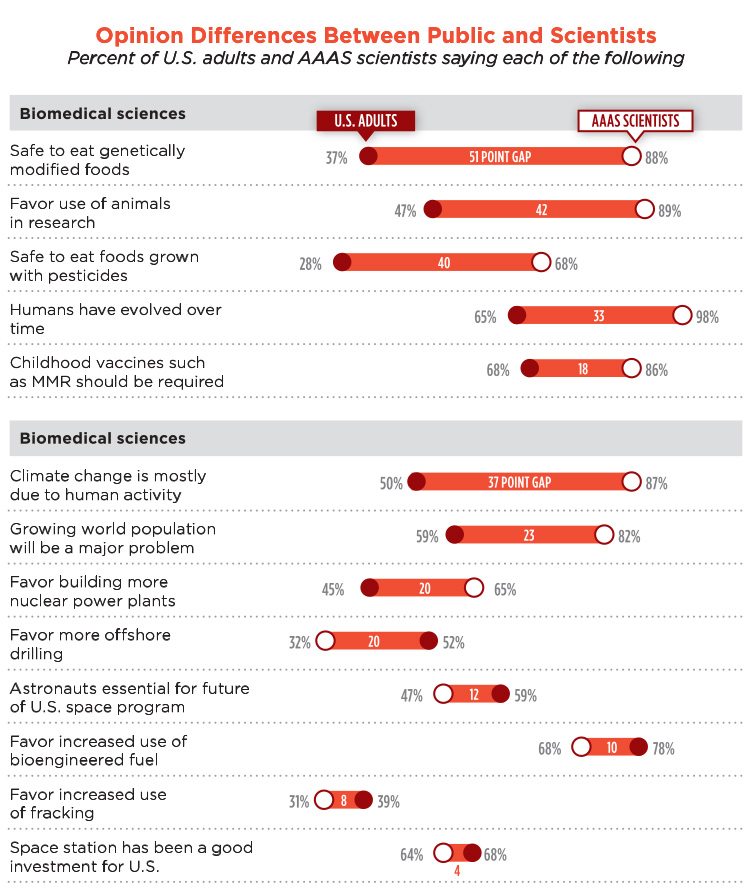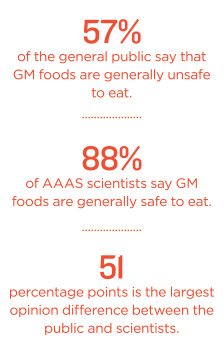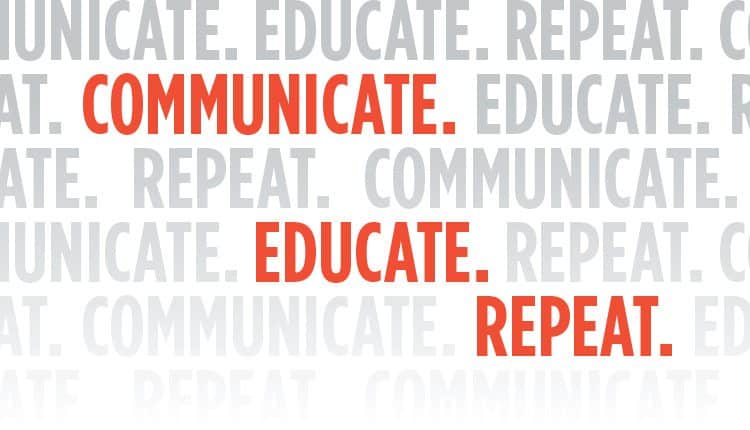It’s an all-hands-on-deck effort to influence the perceptions of policymakers and the public.
Communication. Communication. Communication. That seems to be the mantra of the seed industry from the CEOs to the sales representatives working directly with farmers and from national and international associations to universities.
“It’s a top priority for the seed industry,” says Diego Risso, executive director of the Seed Association of the Americas (SAA). “I have the opportunity to participate in the International Seed Federation, American Seed Trade Association and a number of other seed associations. Nearly every working group and committee has communication as part of its work plan.”
At the International Seed Federation (ISF), leadership recognizes the importance of taking the message of the seed industry beyond that of its members and hired a new communications manager, Jennifer Clowes, in 2015. One of the federation’s primary objectives, identified in the strategic plan, is engagement — “to raise awareness and build understanding of the seed industry and the benefits it brings to a global society.”
With the aim of increasing member and public engagement, one of Clowes’ first tasks was undertaking the development of a new website, which was unveiled in January 2015. Additionally, she’s been working with the ISF Seed Applied Technologies Committee on a communications strategy so members have uniform language to use across the industry, and can avoid unintentionally sending mixed messages when working with stakeholders.
“Communications is really the key to everything,” says Risa DeMasi, past president of the American Seed Trade Association (ASTA) and a founding partner of Grassland Oregon. “Sometimes we think we are saying different things, when we are just speaking different languages. How do we cross that barrier and start agreeing with each other instead of disagreeing?”
In 2013, ASTA’s board of directors, also through its strategic planning process, decided to make a significant investment in its communications efforts to develop and implement a comprehensive communications strategy and promote and support ASTA advocacy goals. The objective: Establish ASTA as a key advocate for the U.S. seed industry and as a high-value resource for its members.
In 2014-15, a Communications Committee was formed with representatives from multinational companies, as well as small and independent companies. Since then, ASTA commissioned a consumer survey and from it unveiled a video promoting the benefits of the seed, with specific examples of economic, environmental and health benefits.
The association also held two communications summits, refreshed its branding, launched a new website and is participating in events that help to carry the industry’s message beyond its members, such as National Agriculture Day in Washington, D.C., and the National Association of Farm Broadcasting’s Trade Talk.
Today, you’ll see Bethany Shively, ASTA director of communications, and Nikki Barnes, manager of marketing and member outreach, leading these efforts.
“We [the seed industry] know we are doing great things, and we have a great story to tell,” says DeMasi, who was tasked with measuring and benchmarking the association’s progress in reaching its goals. “You’ll continue to see more coming out of our Communications Committee — it’s a priority.
“When you go to any session or have any conversation, it all comes down to are you communicating and how are we telling our story.”
Risso says SAA, too, is focused on its communications efforts and will reveal a new website at the beginning of December.
“We do a good job of communicating within the seed industry, but need to do a better job of reaching regulators and the public in general,” he says, noting that each requires the use of different language and strategies. “For example, our communications with regulators focuses on the science, but in talking to the public, we need to first focus on values and emotion and then bring in the science to support that.”
Risso says SAA is working with the seed industry as a whole to support the increasing communications efforts. “This is not new for big companies, but it is new territory for small- and medium-sized companies,” he says. “That’s why you are seeing the hiring of communication experts, the allocating of more money in budgets and increased resources, time and energy expended in this area.”

Pew Research Center
Beyond Associations
While this is a relatively new area of focus for associations, the larger seed companies and researchers have been working to tell their story for the better part of a decade but they are finding new ways to pool resources with the hopes of moving the needle.
Some of the newest investments include GMO Answers, U.S. Farmers and Ranchers Alliance and the Genetic Literacy Project.
GMO Answers was created to do a better job of answering questions from the public about GMOs. It’s a multimillion dollar website that invites anyone to ask any question they have about GMOs, biotechnology and the seed industry, and they get a personal answer from someone within the industry. Those questions and answers are compiled and searchable on GMOanswers.com, which is funded by the Biotechnology Innovation Organization and includes members BASF, Bayer, Dow AgroSciences, DuPont, Monsanto and Syngenta. ASTA is also a supporter of the site.
While GMO Answers puts the spotlight on scientists, plant breeders, company executives and those personally involved in the business, U.S. Farmers and Ranchers Alliance (USFRA) focuses on farmers. USFRA consists of more than 90 farmer- and rancher-led organizations and agricultural partners representing virtually all aspects of agriculture. The goal is to help connect consumers with their food and provide farmers a platform to talk about production methods and issues of importance. And the seed industry, too, is supportive of this initiative. Supporters include Beck’s, Syngenta, BASF, Dow AgroSciences, DuPont Pioneer and Monsanto.
Also trying to help consumers sort fact from fiction is the Genetic Literacy Project, which “explores the intersection of DNA research and real world applications of genetics with the media and policy worlds to disentangle science from ideology.” It is committed to promoting public awareness and constructive discussion of genetics, biotechnology, evolution and science literacy. It is a 501(c)(3) and is supported by non-partisan foundations and organizations.
All three of these projects help connect seed industry representatives, scientists, and farmers and ranchers with consumers and those looking for answers.
Crossover: From Communication to Education

Alan Hirsch, vice president of consumer products for Barenbrug USA, says that one of the key challenges is securing profit margins to allow for research and education.
“I think real damage is being done by not having significant enough margins to support research ‚Ķ we need those same funds to be able to afford to educate,” Hirsch says, referencing the benefits of turf. “The challenge in California is the voice of the environmentalist is so significant and the media listen to those things and regurgitate them to the public.
“We talk about the benefits to state legislators but [that message] just doesn’t get out as much. It’s a real challenge and one our industry needs to face.”
So what are those quotable benefits? Hirsch says that when astroturf is used on a football field, compared to real turf, the field is actually 40-50 degrees warmer. The turf provides oxygen that is vital to the needs, it is cooler and actually supports the ground, he says.
“Our turf today can support 30 percent less water than previously,” Hirsch adds. “That amount of water is significant savings and should be used in the environment to have good turf.”
He also notes that today’s varieties are not only better for the environment but also help reduce noise pollution. In California, Hirsch says tests have been done comparing areas with rock gardens and natural landscapes to that of turf, and these “natural” areas are actually 8 decibels louder than areas with turf.
While the benefits are real so are people’s concerns, but there’s a great deal at stake, from creating healthier ecosystems to food security. Michael Gore, an associate professor of molecular breeding and genetics at Cornell University, is concerned that if as an industry we don’t start doing a better job educating, there’s a lot of potential that will go unrealized — as has been the case with golden rice.
“Golden rice is still very much controversial in the sense that it’s transgenic, and it really hasn’t had an opportunity to address vitamin A deficiency at the human population level in developing nations,” Gore says. “One of the major failings that we’ve had with transgenics is in the early 1990s, when they were first being released. We didn’t really involve the public and educate them and bring them in as part of that process.
“I’m fearful that something like that could happen again for the potentially game-changing technology, CRISPR-Cas9. If the public isn’t brought in as part of this process now, then truly we might fail, not only as plant scientists, but as scientists in general.”
Gore has not just stood on the sidelines when it comes to education. He has chaired the Plant Breeding Coordinating Committee, a U.S. Department of Agriculture sponsored advisory group of representatives from land-grant universities.
“Even though I can’t lobby, I can collectively answer any questions that come from groups within the federal government,” he shares. “This provides all plant breeders a vehicle to share and communicate with people, who are perhaps policymakers, so they can appreciate the impact that plant breeding has on the United States — food and nutritional security, climate change, national security.”
Gore says there is always going to be risks with any new technology but he encourages policymakers to carefully and objectively evaluate the science.
Last December, the National Association of Plant Breeders and ASTA were invited to the White House Office of Science and Technology Policy to discuss plant breeding issues.
“It was a great opportunity to help educate the Executive Branch of the needs of plant breeding and to talk about some of the new technologies,” says Don Blackburn, global seeds and traits research and development lead for Dow AgroSciences, who represented NAPB.
But Blackburn says that education around these new technologies shouldn’t stop with policymakers and the public. He says a conscious effort needs to be made to retrain experienced plant breeders.
“At Dow AgroSciences, we’ve made an effort of pairing up experienced plant breeders with the younger, new, best and brightest plant breeders,” he says. “That’s been a very good marriage. The experienced plant breeders teach about the connection to the customer and the younger plant breeders help to re-educate in the learning process of the experienced plant breeder into modern plant breeding techniques.
“It’s worked extremely well because the younger breeder doesn’t really understand what it takes to get a product to market. With the plant breeding cycle being so long, you need to go through it and live it to understand how to get products to market. It’s really been a good win-win.”
And that’s really what it’s all about, connecting the dots, says DeMasi. Whether it’s product related and knowing what your customers will need or introducing different sectors to each other and people to each other. Sometimes the answers exist; you just have to look for them.
“We all have a voice, and we need to use it,” she says. “Don’t expect that someone else is going to take care of that for you. You have a perspective that is unique — it’s different from anybody else’s — and we need to hear it.”
What story will you tell, and who will you help to educate?
ABOUT THE GIANTS

In 1989, he was first tasked with finding a place in Wisconsin to start a research station for corn breeding. Today Blackburn oversees Dow AgroSciences’ global field and laboratory teams with the mission of discovering and developing new varieties and hybrids through modern plant breeding technologies.

A forage, cover crop and turf seed guru, DeMasi spends her time connecting the dots through global networking, education, marketing, project development and government affairs. Most recently, she served as chairman for the American Seed Trade Association (2015-16) and remains active on the board of directors.

A true “hipster” when it comes to plant breeding, Gore pushes the bounds in every possible way, from teaching and guiding research projects using quantitative genetics and high throughput phenotyping to community service and industry relations as former chair of the national Plant Breeding Coordinating Committee. There’s nothing he won’t tackle.

A fifth-generation seedsman, Hirsch says with pride that his family has been involved in the seed business since 1864. As vice president of the Consumer Products Division, he’s responsible for anticipating customers’ needs before they know they need it and working with plant breeders to have product ready.

Having joined the Seed Association of the Americas in 2009, some might say Risso is a gatherer of information, ideas and people. He is responsible for bringing everyone around the table to talk through issues that impact the international movement of seed, be it phytosanitary requirements, intellectual property, low-level presence or any other issue involving seed and trade.











